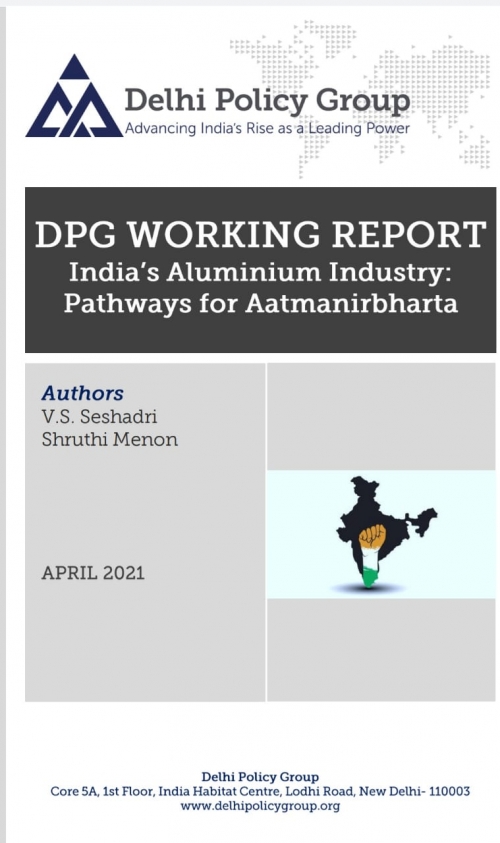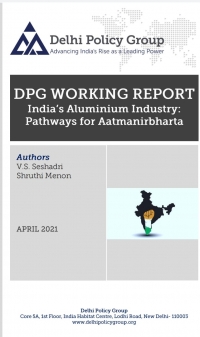India's Aluminium Industry: Pathways for Aatmanirbharta
Date: April 26, 2021
By Dr. V.S. Seshadri, I.F.S (Retd.)
, Shruthi Menon
India is well endowed with bauxite ore and has substantial coal reserves, which have enabled the country to become a significant producer of primary aluminium. Production of recycled or secondary aluminium has also been rising steadily, using mainly imported aluminium scrap. However, India’s per capita consumption of the metal remains low compared to the world average. More importantly, India underperforms on undertaking domestic value addition.
This working report identifies the challenges facing India’s aluminium industry in the primary, secondary and value added segments and ways to progress their full potential, generating both greater employment and higher export receipts. Trade in aluminium products is analysed in depth against the backdrop of India’s competitiveness. China’s mercantilist push, our existing FTAs that are facilitating easier imports into India from partners and recent trade actions by the US are examined. Comparisons are drawn between the tariff structures of India and a number of other competitive suppliers.
Viewpoints of various industry stakeholders and the findings of recent studies have been taken into account by the authors, to the extent they could be accessed, before making the recommendations contained in the report.
This working report identifies the challenges facing India’s aluminium industry in the primary, secondary and value added segments and ways to progress their full potential, generating both greater employment and higher export receipts. Trade in aluminium products is analysed in depth against the backdrop of India’s competitiveness. China’s mercantilist push, our existing FTAs that are facilitating easier imports into India from partners and recent trade actions by the US are examined. Comparisons are drawn between the tariff structures of India and a number of other competitive suppliers.
Viewpoints of various industry stakeholders and the findings of recent studies have been taken into account by the authors, to the extent they could be accessed, before making the recommendations contained in the report.



